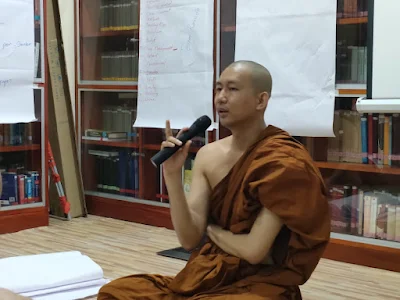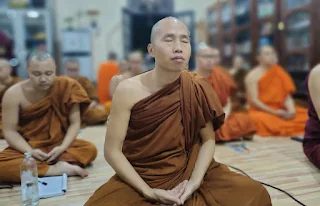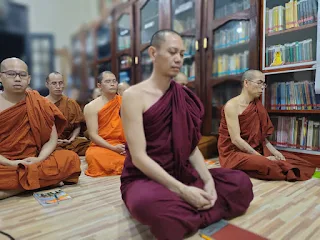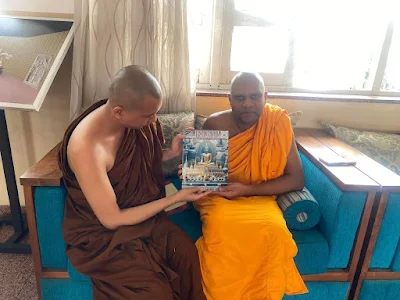Then, when there's noise from nearby, with those loudspeakers, getting irritated, doesn't the thought come "They're disturbing just when I'm meditating"? With all the noise and loudspeakers playing, the object of meditation is breaking, right?
This is the uninstructed worldling (assutavā puthujjana), because of lack of learning. Isn't it taught about the instructed noble disciple (sutavā ariyasāvaka)? When one has learning and understanding, is it a loudspeaker or just sound?
Is the knowing of sound self or mental phenomena? It's sound-consciousness, mental phenomena. Sound is physical phenomena. These are the two - mind and matter. Is it a self that knows this mind-matter or is it the Path Truth? Which path knows it? (It's the concentration path, Venerable Sir). Concentration is established now. Isn't this worth contemplating?
Is it a loudspeaker or mind-matter? Is it a loudspeaker or just sound? See, isn't sound physical phenomena? Isn't knowing mental phenomena? Do you still see loudspeakers? Do you still see limbs? You see mind-matter.
Doesn't mind-matter cease after hearing? The sound has stopped. Return to the nose - can't you start again with knowing in-breath and out-breath? Then while breathing softly, doesn't an itch come? "Oh, it's itching!"
Should you follow the itch? Getting irritated again - "So many disturbances while I'm practicing!" Doesn't the Buddha teach "Ehi - come, passa - observe"? You should follow what's prominent.
Now there's frustration - "While I'm practicing, this and that keeps coming." Is this knowing or not knowing the fault of the aggregates? Think about it this way. Isn't it worth contemplating? Isn't it taught "Ehi - come, passa - observe"?
Thus, for the instructed noble disciple, learning is needed. Isn't it taught that hearing leads to understanding, and understanding leads to attainment? Not attaining now is because of insufficient learning. This is worth contemplating.




.jpeg)
.jpeg)
.jpeg)

.jpeg)

.jpeg)
.jpeg)

















.jpeg)
